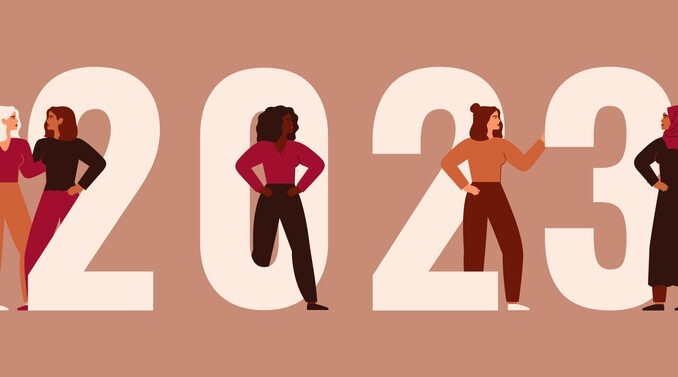
How can organisations reinforce and confirm their commitment to diversity, equality and inclusion and draw on the power of a diverse workforce for 2023?
CREDIT: This is an edited version of an article that originally appeared on Management Today
Diversity, equality and inclusion took a big hit in 2022. The financial crisis has compounded existing inequalities and the major concern now is not that progress has halted, but that progress is actually slipping backwards.
By committing to these five diversity, equality, and inclusion resolutions in 2023 your organisation can help build a fairer society that represents us all, and reap the benefits of the new return to inclusion.
Be proactive about creating inclusion and belonging in hybrid teams
The best organisations have become proactive in creating a sense of cohesion for hybrid teams. Ensuring that this is a priority at the start of the employee lifecycle can have a big impact. Think of your onboarding process in a more methodical way to ensure team cohesion, spend quality time with new and returning employees, and introduce a work buddy or a coach right from the start.
Check-in with employees about meetings to find out how they felt the session went. Be inquisitive, ask questions and find out what they need support on because a collaborative environment will help build a sense of trust in the team. Ensure conversation in one-to-one meetings goes beyond work and find out how colleagues are finding the cohesion in the team.
Be responsive to the cost of living crisis
Organisations must be conscious of the pressures their employees are facing as a result of the cost-of-living crisis – and be aware of how this builds up from all angles. Consider whether your recruitment process inhibits those from lower socio-economic groups or those struggling financially.
Consider the impact of the cost-of-living on social mobility
Look at your job specifications and check to see if you are unwittingly creating barriers for those from lower socio-economic backgrounds – for example, those who may not have been able to afford university. If your organisation offers an unpaid internship think about how this will restrict the diversity of your potential pool of applicants. Easing the pressures of the cost-of-living crisis on your employees and prospective employees will lead to greater diversity in your organisation.
Safeguard your diversity, equality and inclusion budget
If you embed inclusion into your organisation’s culture, this will ensure it’s not the first thing to be cut when financial uncertainty hits. During periods of instability people become more risk-averse and are much more likely to lean into their affinity bias and hire people who look, sound and act like them into leadership roles. Diversity is what you need to survive and thrive in a time of change and uncertainty.
In the case of redundancies, think critically about who you are letting go and challenge your own bias. There’s often a lack of racial awareness in management decisions and this, alongside the deeply-rooted systemic racism in our society, has led to racially marginalised women being more likely to face redundancies than their majority counterparts.
Place an intersectional lens on employee well-being
Every employee has different needs and the support you provide them must reflect this. In order to create well-being solutions that really work, it’s imperative you better understand the multi-layers of discrimination employees face, and how this impacts them. Be mindful of how bias – unconscious or not – shows up in the well-being solutions you’re providing.



Be the first to comment